Planting and caring for petunia while flowering in a pot
Growing petunia in your summer cottage is a fascinating activity. Homemade flowers are always more desirable than purchased or artificial ones. Petunia is not demanding in terms of planting and care, so every gardener can grow a beautiful and healthy flower. One of the popular ways to grow petunias is in pots or flowerpots. They are placed near gazebos and arches and used as elements of landscape design. Caring for flowers consists of watering and fertilizing, pruning and replanting. Let's take a closer look at what it means to care for petunia during flowering in a pot and learn the secrets of experienced flower growers.
How to plant petunia
Growing petunia begins with the preparation of planting material, selection of location and soil mixture. The duration of flowering and the health of the plant depend on this.
Seedling preparation
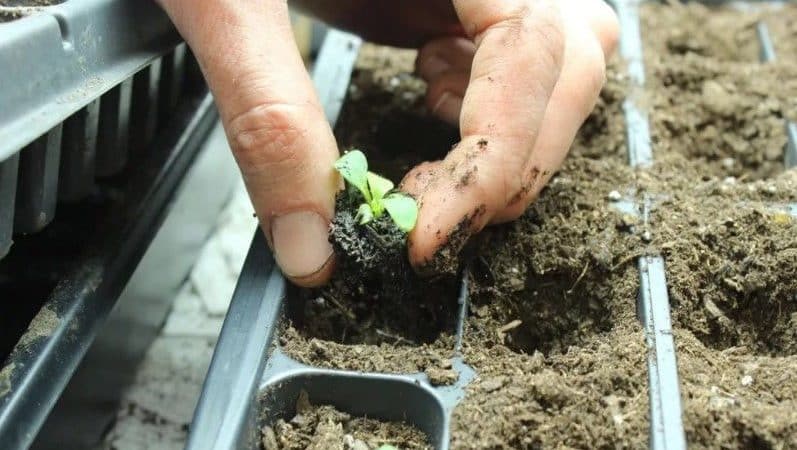
Gardeners recommend planting petunia seedlings. To do this you will need a seedling container, seeds, soil, covering material, expanded clay, spray bottle with water. Seedling cassettes or clean bags made of thick cardboard are used as containers. The main thing is to thoroughly rinse the container and wipe dry with paper towels before planting. If there is no time to prepare the container, the seeds are planted in peat tablets.
Attention! The soil for seedlings should be nutritious, porous, light and low in acidity. It is recommended to purchase ready-made soil mixture in the store - such soil has already been cleared of insects, clay, and weeds in advance.Petunia loves soil with the addition of peat, humus, and wood ash.
The growth and health of seedlings depends on the quality of the seeds. 2-3 weeks before planting, they are placed in expanded clay to protect them from rotting, then soaked for a day in a growth stimulator. After planting, make sure that the seedlings receive sunlight and warmth; the optimal temperature is +25°C. The soil should always be slightly moist. At the stage of 2-3 true leaves, petunia is plucked, and after 12-14 weeks from the moment of sowing, the seedlings are placed in pots.
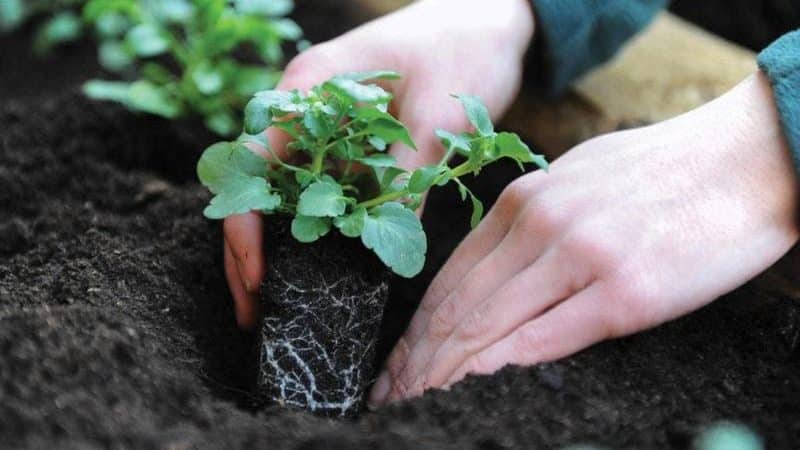
What pots are best to plant petunia in?
The growing container should be light and of high quality. Some summer residents prefer to plant petunia in pots and leave them on the ground, for example, near the entrance to the house. Others are in flowerpots. The difference between these containers is that the pot comes with a tray, while a flower pot is just a beautiful vessel in which another container is placed. The pot always has drainage holes.

Flowerpots
The advantage of a flower pot is that it does not need a tray. Gardeners can also easily replace flowers; there is no need to waste time and effort on replanting plants. It is enough just to pull out one type of petunia and place another in a pot. Compared to a hanging pot, the planter looks more expensive. It can be round, cone-shaped, diamond-shaped, square. Place it in any free place.
Many modern models of flowerpots are equipped with an automatic watering system, which makes caring for petunia even easier. Such plants are rarely watered, and if water stagnates, the flowerpot can be removed by removing the plug. Water will not pour on your head.
Pots
The advantage of hanging pots for petunias is that they can be purchased at any garden store at a low price. Thanks to the drainage holes, the plant will not die from excess water. The pot can easily be converted into a flowerpot - just cover the holes. However, sometimes pots are sold without a tray, and you have to look for one yourself. Pallets often break or are simply lost, so gardeners choose hanging pots for planting in the garden. They look impressive and are suitable for growing any type of petunia.
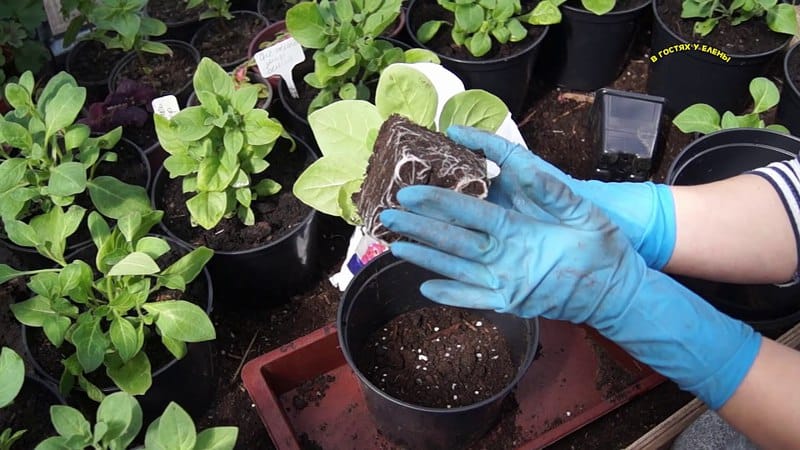
Soil preparation
The soil should be light and water-absorbing. The ideal soil composition for petunia is: turf, leaf soil, peat and humus in a ratio of 2:2:1:1. The mixture is diluted with perlite - it serves as a leavening agent, provides air access to the root system, retains moisture and reduces acidity. Also, to improve the quality of the soil, gardeners add hydrogel in the form of powder or granules to the pots. In hot weather, it moisturizes plants and replaces drip irrigation. For 1 liter of soil, 1 g of hydrogel is required. One application of granules is enough for 5 years.
Attention! When purchasing a ready-made composition, pay attention to the acidity of the soil. A conscientious manufacturer must indicate it. For petunia, choose soil with an acidity of 5.7. The indicator of garden soil is checked with litmus paper. If the acidity is high, the soil is limed or sprinkled with dry wood ash.
How to care for petunia in hanging pots outdoors
Petunia is perennial, and caring for it consists of simple agrotechnical techniques. In order for the plant to bloom on time and delight with lush greenery, it is important to pay attention to it not only in spring and summer, but also in winter.
During flowering
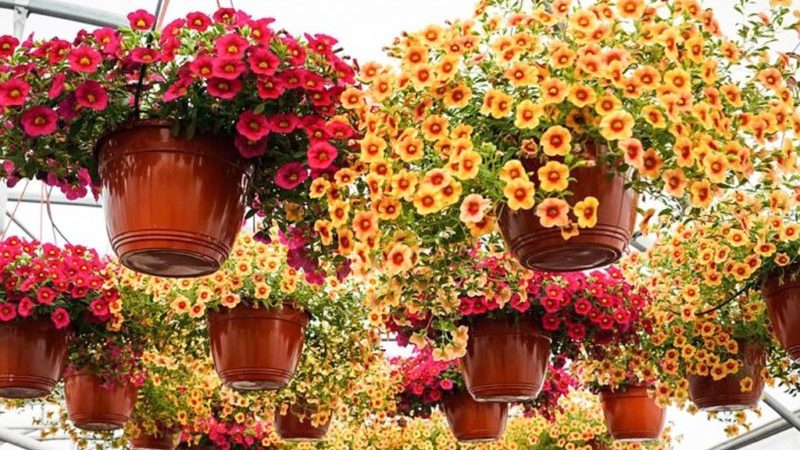
Petunia blooms in mid-summer, the exact time depends on the growing region. It is in summer that the flower needs abundant watering and feeding. Prolonging flowering will help competent pruning and transplanting into a new container, if necessary.
How to water petunia growing outdoors
How to water petunia in pots:
- If it grows outdoors, the amount of precipitation is taken into account when watering. On a veranda under a roof or canopy, the soil is moistened every day. In dry and hot weather - twice a day (early morning and evening, after sunset). Moisture should not stagnate in the ground, otherwise the roots will rot, which will lead to the development of diseases.
- Water is carefully directed in a thin stream under the base of the flower. It is important not to damage the plants, especially young ones, with strong pressure.
- If petunia grows outdoors, during heavy rain or hail it is covered with a special lid.
- Once every 2-4 days, foliar watering is also carried out - the petunia is sprayed with a spray bottle. This way water nourishes the leaves, which is beneficial for development.
- Watering should not be done in the sun, otherwise the leaves will get sunburned.
- Use water at room temperature, cold is not suitable.
- In spring, petunia is watered 2 times a week.
Top dressing
Petunia is very fond of mineral and organic fertilizers. They strengthen the plant’s immunity and prolong the flowering period, protect against diseases and stimulate healthy development for the next year.
Summer residents use the following fertilizers:
- 10 g of urea are diluted in 10 liters of water. Nitrogen stimulates the growth and development of inflorescences. This feeding is relevant 3-4 weeks before the start of flowering. Urea is affordable and sold at any garden store.
- Twice a season, potassium and phosphorus fertilizers are used - superphosphate, potassium salt. They prolong flowering and have a beneficial effect on the appearance of flowers.
- A week before flowering, a complex fertilizing is prepared: 20 g of nitroammophoska, an ampoule of Zircon, and 20 g of ammonium nitrate are added to a bucket of water. Stir thoroughly and water the petunia at the root.
- Ready-made Fertika Lux fertilizer is easy to use. It stimulates growth and nutrition, lengthens the flowering period, and increases the intensity of leaf color. 1 tbsp. l. stir in 10 liters of water and use for irrigation.
To ensure that fertilizers provide more benefits, the soil is carefully loosened and cleared of debris before application. The right time for feeding is the morning or evening of a dry and windless day. When preparing formulations, it is important to maintain proportions, otherwise petunia will suffer greatly from an excess of microelements.
Trimming
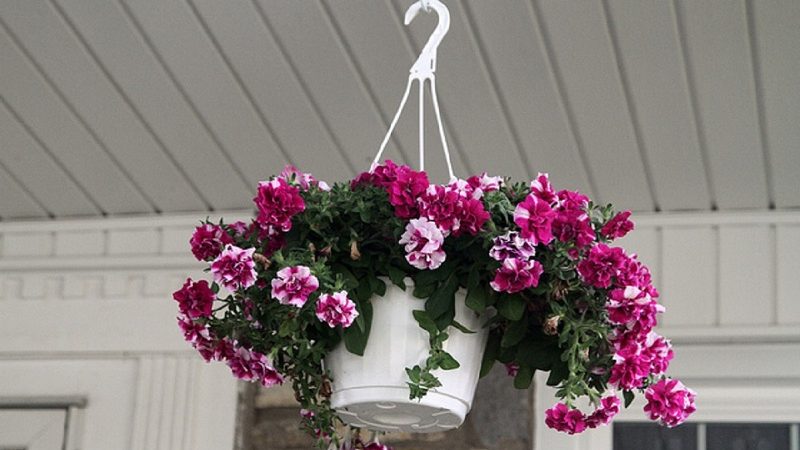
By mid-summer, some petunia bushes stretch out their branches greatly. Because of this, flowers grow poorly, the flowering period is shortened, the bush grows and quickly loses its shape. In this case, gardeners shorten the length of the shoot by 1/2. If the flower is young - 1/3. Thanks to pruning, petunia produces more buds and blooms more luxuriantly. Summer residents use pruning shears or scissors disinfected with Bordeaux mixture. If the shoots are thin, they are torn off with your fingers and then the top is pinched.
Summer residents are advised to follow the following rules:
- the length of the cut branch must be at least 12 cm;
- leave at least 4-5 healthy leaves on one;
- if you have no experience in pruning, use garden shears;
- Regardless of the timing of the procedure, remove dry buds and leaves;
- Sprinkle the pruning areas with crushed charcoal to prevent infection from getting into the wounds.
Is it possible to replant flowering petunia?
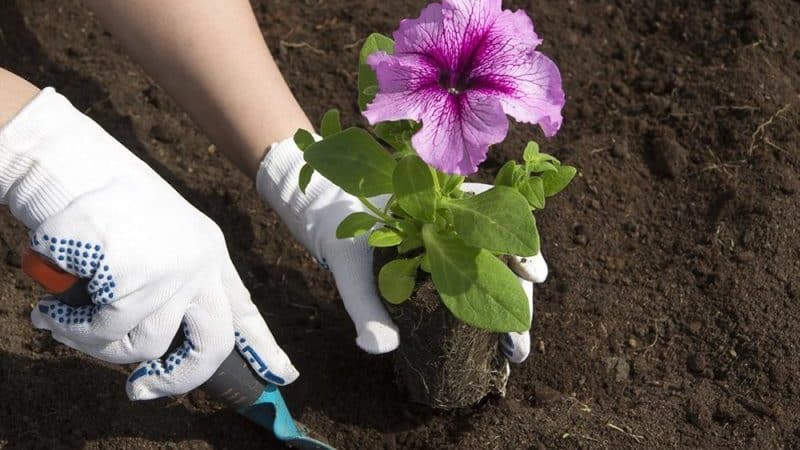
You can replant flowering petunia, but you need to do it very carefully. If the flower is damaged during the procedure, it will die.You can understand that a plant needs replanting by external signs: the leaves turn yellow, the soil is too dry or wet, the stem is weak and thin, signs of disease or pests.
The transplant process looks like this:
- Summer residents are preparing new pots with nutritious soil.
- Petunia is watered abundantly so as not to damage the fragile roots.
- Using a spoon or spatula, remove the plant along with a lump of earth and place it in a prepared container.
- Compact the soil and water the petunia again.
- After 5 days, feed with organic fertilizers.
Features of winter care
To preserve petunia until next year, flower growers pay attention to winter care. It does not require much time and involves simple procedures. Pots of flowers are brought home or onto the veranda. The optimal temperature is about +10°C, but most varieties tolerate drops down to +2°C. In winter, petunia needs plenty of light and watering 2-3 times a month. It is not recommended to feed the plant.
They preserve the plant using Cherenkov. They are cut and rooted in a prepared container with soil. The length of the cuttings is at least 10 cm, the lower leaves are removed. After 2-3 weeks, new leaves are visible - a sign that the procedure was successful. Subsequently, the cuttings are planted in separate pots. The new planting material is ready.
Why does petunia grow poorly in pots?
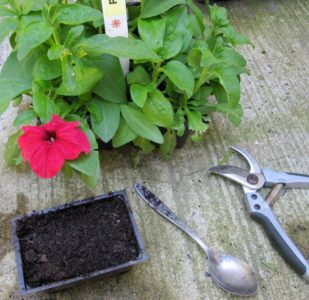
There are several reasons for the slow growth of petunia in pots. One of them is improper care. Some gardeners make mistakes: they water the flower with cold water, do not monitor the level of soil moisture, and flood the plant. In this case, the roots rot, causing growth to slow down. The problem may also be caused by a lack of mineral fertilizers.For example, if you overfeed petunia with urea, the flower will spend all its energy on stems and leaves, and the buds will remain small.
Attention! A common cause of poor development is lack of sunlight and warmth. Petunia loves the sun; pots are not placed in the shade.
Diseases also negatively affect growth: blackleg, white and gray rot, powdery mildew, late blight. If signs of the disease are detected, gardeners immediately treat petunia with a solution of Topaz or Previkur. For preventive purposes, they follow the rules of planting and care, disinfect garden tools, and spray petunia with a solution of wood ash.
Slow growth can be caused by insect pests - aphids and spider mites love petunia. Because of them, the leaves and buds are deformed, the flower turns pale. For prevention, the plant is sprayed with a solution of laundry soap. Treatment: treatment with Fufafon or Tanrek.
Conclusion
Proper care of petunia in pots outdoors includes daily watering, balanced fertilizers, and protection from diseases and pests. In order for the plant to grow healthy, in the middle of summer, summer residents remove long shoots with their hands or garden shears.
The secrets of growing petunias in pots are simple: water with warm water, plant in the sun, select containers with drainage holes, and observe the temperature regime. If there are no beautiful flowerpots at hand, flowers are grown in plastic buckets or bottles, having previously disinfected the containers.